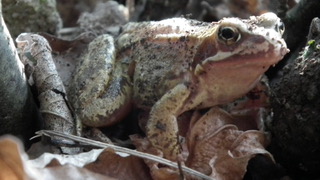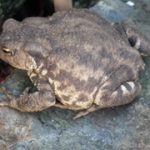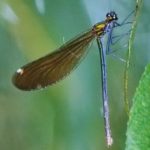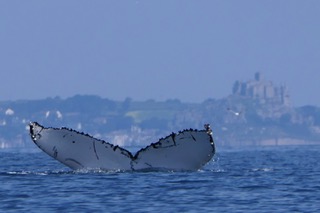Nature Notes February 2022
 A seesaw of a month. Both earlier dawn and lighter evenings and the beginning of warmth in the sun herald the first signs of spring.
A seesaw of a month. Both earlier dawn and lighter evenings and the beginning of warmth in the sun herald the first signs of spring.
Yet there can still be savage frosts, snow, and heavy, sweeping rain knocking us back towards winter again. But stay hopeful. Snowdrops are out, as are violets and primroses.
Both the song thrush and robin are already in full early morning song; blackbirds and raucous rooks are completing their nests, or even sitting on eggs; and in wet gardens and, beside ponds and marshy land, frogs and toads are in throaty far-carrying voice.
 All are preparing for the breeding season ahead. It is said traditionally that Valentine’s Day, the 14th of February, is when birds choose their mate.
All are preparing for the breeding season ahead. It is said traditionally that Valentine’s Day, the 14th of February, is when birds choose their mate.
It is also the day adopted by the BTO to start National Nestbox week 14 – 21 February. Of course, nest boxes can be made for small mammals as well as birds. Try the BTO National Nestbox Week website for plans and outlines showing you how to easily construct various types of boxes with hole entrances, half open entrances, etc.
You will find handy hints to show you where to site nest boxes for success. For example, how to fool predators from robbing them, what height to have them above the ground and the direction to which they should be pointing: – generally in a North/Easterly direction to avoid the heat of the sun.
One of our members, 14 year old Finley Carden, has posted, on our Wild Roseland Facebook group page, a tawny owl making use of a nest box in St Mawes. See the video HERE. Put on the sound to get the full experience.
He has his own Youtube channel where he has lots of videos as well as a live stream. Cornish Wildlife Watch
 I would encourage you to have a go at constructing a nest box, or failing this, to purchase one, at local hardware stores, garden centres or through reputable websites. Ideally, they should be in place by the beginning of March.
I would encourage you to have a go at constructing a nest box, or failing this, to purchase one, at local hardware stores, garden centres or through reputable websites. Ideally, they should be in place by the beginning of March.
Valentine’s day is also traditionally the day for frogs, toads and newts, the gardeners friends, to return to ponds. Frogs, often en masse, orgy like, come back to ponds to mate. Then each female lays up to 2000 eggs in clusters of frogspawn.
 Toads, having survived like the frogs, out of the water in damp, dark places also return in large groups, perilously crossing roads, as they travel to breeding ponds to mate collectively and lay their strings of spawn. Newts likewise return. They mate and the female then, individually, wraps her 200 or more eggs in aquatic pond plants.
Toads, having survived like the frogs, out of the water in damp, dark places also return in large groups, perilously crossing roads, as they travel to breeding ponds to mate collectively and lay their strings of spawn. Newts likewise return. They mate and the female then, individually, wraps her 200 or more eggs in aquatic pond plants.
 Few of the offspring produced by these eggs survives, as they provide food for those voracious predators, Dragonfly or Damselfly nymphs. Those are utterly amazing having changed so little since prehistoric times, as you can discover if you come to our next talk on them by Dave Cooper, who is the Dragonfly recorder for East Cornwall, see details below.
Few of the offspring produced by these eggs survives, as they provide food for those voracious predators, Dragonfly or Damselfly nymphs. Those are utterly amazing having changed so little since prehistoric times, as you can discover if you come to our next talk on them by Dave Cooper, who is the Dragonfly recorder for East Cornwall, see details below.
All at Sea – Watching Wildlife from a Kayak
On Tuesday 25th January we waited in Gerrans Parish Memorial Hall with trepidation to see how many people would brave a cold, dark evening and come to our first indoor event of 2022. Covid has certainly made us all more cautious about meeting in groups, so we were uncertain as to whether or not we would have an audience.
 Protocols were followed, signing in observed, as was the wearing of masks throughout and the sharp night air circulated through open doors throughout the evening. Amazingly some sixty people braved the elements, not least I am sure, because our speaker’s reputation was well known from his first visit 2 years ago.
Protocols were followed, signing in observed, as was the wearing of masks throughout and the sharp night air circulated through open doors throughout the evening. Amazingly some sixty people braved the elements, not least I am sure, because our speaker’s reputation was well known from his first visit 2 years ago.
It was the return of The Lone Kayaker, Rupert Kirkwood. Please look at his website blog for outstanding photographs and film of wildlife from the water. The Lone Kayaker
He led us through an outstanding trip starting in south Dorset and then kayaking westwards along the south Devon coast and Cornwall, with just two cameras balanced on his kayak, one for above the waterline and one for below. He diverted to offshore lighthouses, continued to the Scillies and then went around the north coast of Cornwall, Devon, and Somerset to complete his journey at Minehead.
We saw wonderful photographs and film of whitebeaked, common, Risso’s and bottlenosed dolphins performing and making eye contact with him, and harbour and grey seals full of playful curiosity near the kayak. The sight of 3 metre, 40mph, powerful blue-finned Atlantic tuna was jaw-dropping. Underwater we saw dustbin lid sized jellyfish, a shot of a rare leather-backed turtle, and the gaping mouth of a 10 metre basking shark filtering plankton. Next it was film of Minke whale, also up to ten metres in length. They are becoming regular passing through our waters, but few people have seen them this close.
 There were so many highlights, but for many of us it will probably be the feeding frenzy in Mount’s Bay, culminating in the extraordinary sight of a huge humpback whale breaching the surface and heading towards the kayak. However, despite its size, (they grow up to 15 metres) Rupert lived to tell the tale. And we are so glad that he did.
There were so many highlights, but for many of us it will probably be the feeding frenzy in Mount’s Bay, culminating in the extraordinary sight of a huge humpback whale breaching the surface and heading towards the kayak. However, despite its size, (they grow up to 15 metres) Rupert lived to tell the tale. And we are so glad that he did.
To all those of you who came to the evening, our thanks; and to Rupert Kirkwood a special thanks for sharing such unique experiences with us, delivered with knowledge, humour, and a care for the wildlife in our local seas.
Thanks to you all for supporting Wild Roseland,
David Hall
Acknowledgments to:
David Hall for the article
Video:
Finley Carden, Tawny Owl in nestbox
Photos:
Jane Lewarne, Singing Robin
Stuart Martinez, Song Thrush
Maggie Glass, Blue Tit
David Hall, Common Frog
David Hall, Common Toad
Jane Lewarne, Beautiful Demoiselle Damselfly
Rupert Kirkwood, Puffin and Humpback Whale
Upcoming Events
February 2022 – Dragonflies and Damselflies
Dave Cooper
Tuesday, 22nd February 2022, 7.00pm
Gerrans Parish Memorial Hall
March 2022 – A Flora of Cornwall
Colin French
Tuesday, 29th March 2022, 7.00pm
Gerrans Parish Memorial Hall
All our evening meetings will take place in Gerrans Parish Memorial Hall. Car parking is free for anyone attending. Admission is by donation, and agreement to abide by whatever advice is in place currently for that venue regarding Covid.
